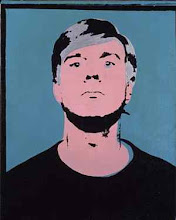 |
| Andy Warhol, Brillo Box, 1964 |
It is the role of artistic theories, these days as always, to make the artworld, and art, possible. Arthur Danto (1964) ‘The Artworld’ in Ross, S.D. ed. (1994) Art and Its Significance, Albany: State University of New York, p479
Danto's epiphany as a philosopher of art occured in the Stable Gallery in 1964 when he was confronted by Andy Warhol's Brillo Box. Presented as a sculpture, this plywood, painted and silkscreened object was 'visually indiscernible' from the manufacturer's carton. For Danto this puzzle crystallised the problem of art, and in particular the problem of determining what distinguished a work of art from a 'mere real thing': Why is ‘Brillo Box’ art when the Brillo cartons in the warehouses are merely soap-pad containers? Danto, Arthur C. (1993) ‘Andy Warhol: Brillo Box’, Artforum, September, p129. What followed was an essay, The Artworld, first published in the 'Journal of Philosophy' in 1964, in which he proposed that,
To see something as art requires something the eye cannot descry – an atmosphere of artistic theory, a knowledge of the history of art: an artworld. Arthur Danto (1964) ‘The Artworld’ in Ross, S.D. ed. (1994) Art and Its Significance, Albany: State University of New York, p477
His ideas were further elaborated in The Transfiguration of the Commonplace (1981) in which he invited the reader to imagine an exhibition comprising a series of visually identical red panels: he then proceeds to demonstrate how although visually indiscernible the individual panels may have very different meanings.
Other books followed, including After the End of Art: Contemporary Art and the Pale of History (1997), The Abuse of Beauty: Aesthetics and the Concept ofArt as well as regular art criticism and many exhibition catalogue essays.
Read his Letter to Posterity.
Read obituaries in The Guardian and The New York Times.Read his Letter to Posterity.
 |
| Steve Pyke, Arthur Danto, From 'Philosophers' Oxford University Press, 2011 |

























